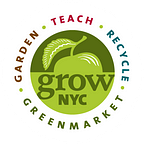The Best City Views Are for the Bees
David Graves doesn’t seem like a law-breaking custom buster.
A soft-spoken man with a homespun stand, he’s sold his family’s jams, jellies, honey, and maple syrup for decades, and has been capturing nature’s sweetness since before he lost his baby teeth. Back in 1956 when he was just six years old, he began helping his big brother tap sugar maples in their backyard in Williamsburg, Massachusetts, so you could say he was an old pro by the mid-1970s, when he and his wife, Mary, began selling their own preserves, including savory-sweet combinations such as Garlic Raspberry
Jelly, Ginger Jelly, and Hot Strawberry Jam, from their front yard stand in western Massachusetts.
He still makes maple syrup the old-fashioned way, stockpiling logs all year and single-handedly collecting sap from eight hundred taps, which he boils around the clock each March on a wood-fired evaporator. “No reverse osmosis for me,” he laughs. He’ll sell the syrup in small bottles all year long, alongside honey from his hives and the jams and jellies that Mary now makes with their daughter, Heather, from fruit they grow on their farm in the Berkshire
Mountains. (Raspberry jam is the top seller, although his Berry Hot Garlic jelly spiked with jalapeño and homegrown garlic also has its followers. “I’m physiologically and psychologically addicted to the Berry Hot Garlic jelly,” wrote one enthusiastic fan named Carly Simon. “I put it on rice cakes and lock myself in the closet and see no one for days.”)
Graves even does a brisk business with an almost forgotten sweet-tart syrup called switchel that New England farmers long ago drank by the ladleful out in the hay and cornfields. His recipe, which calls only for ginger, raspberry vinegar, a touch of sugar, and well water, now provides traditional refreshment in the urban jungle.
But David’s operation took a decidedly nontraditional turn in the 1990s.
It all began when black bears, hungry after hibernation, raided Graves’s Massachusetts hives of their honey payload, and he experimented with elevating his remaining hives out of ursine reach. One day, sitting in traffic on the way to market, he looked up at the skyline and realized that there are no bears on city rooftops. An idea was born.
Back then it was illegal to keep honeybees in New York City; the health code banned bees as “wild, ferocious, fierce, dangerous, or naturally inclined to
do harm.” But Greenmarket founder Barry Benepe was intrigued by the idea, and in 1996 he allowed Graves to quietly set up a hive on the rooftop of the
Greenmarket office on East 16th Street, two blocks east of Union Square.
The experimental urban apiary worked so well, Graves set out a sign at his stand, as if written by the bees: “We are very gentle. We like to share our New
York City honey. Do you have a rooftop?”
Before long he sited a second hive, on 113th Street, and the rooftop project soon grew. He quickly developed rules (no fire escape hives, no ground-level
hives, no wild roof parties, and all hives must be tied down or well weighted — it’s windy up there.) By 1999, Graves was illicitly tending thirteen urban hives. Like many New Yorkers, the bees are transplants — in this case, docile Italian honeybees shipped from a Georgia apiary — but they busily took to the
Manhattan flora, collecting pollen and nectar from window boxes, parks, and the flowering trees that line so many city sidewalks. Linden, gingko, sumac, and black locust, along with a profusion of ornamental gardens, give the urban jars a more floral flavor than his clover-feeding Berkshire bees. Rooftop owners are “paid” with honey.
Thankfully the City’s bee ban was overturned in 2010; there are now more than two hundred registered hives throughout the five boroughs. Graves still
tends a half-dozen, aware that there aren’t enough flowers in the city to nourish endless numbers of hives. But while his multistate operation — with a half-million bees, as well as an accompanying network of tenants, apartment owners, and landlords — may seem far removed from his early days, it all maintains the earnest feel of that 1970s front yard stand where locals slipped their payment into a wooden box and came back to return the jars, albeit with a city twist.
“Up in Massachusetts, I put hives on rooftops to keep them away from bears,” laughs David. “Here I do it to keep to them away from people.”
This story is excerpted from The New Greenmarket Cookbook, by Gabrielle Langholtz and available from DA CAPO PRESS/Lifelong Books.
Want to learn more about GrowNYC and our $40 for 40 campaign? Visit http://www.grownyc.org/blog/greenmarket-40-40.
